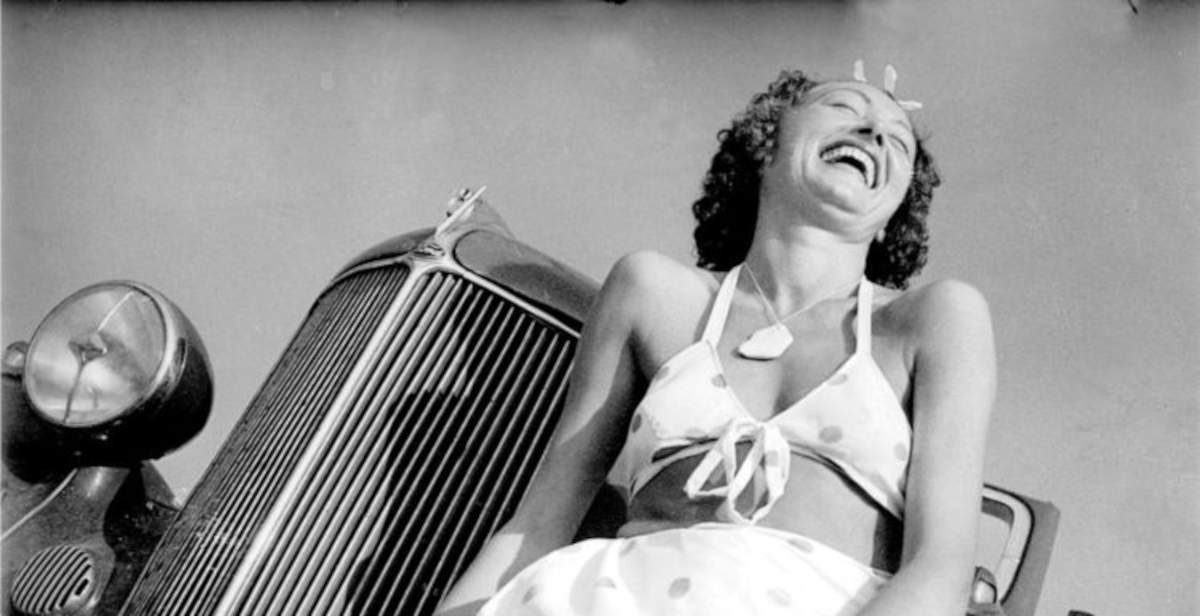It will be dedicated to Lee Miller, a complex and multifaceted figure of twentieth-century photography, the major autumn exhibition Lee Miller. Works 1930-1955 at CAMERA - Italian Center for Photography in Turin. The exhibition, curated by artistic director Walter Guadagnini, will open to the public on Oct. 1, 2025, and will remain open until Feb. 1, 2026. On display will be more than 160 images, all from the Lee Miller Archives, many of them almost entirely unpublished, to offer an itinerary that combines the public and private aspects of the photographic production of one of the most iconic visual witnesses of the last century. The initiative also marks the start of CAMERA’s 10-year anniversary celebrations, which for the occasion has planned a rich program of events and insights dedicated to the universe of photography. The exhibition highlights the intensity and variety of Lee Miller’s production over a time span from the 1930s to the 1950s, outlining a professional parabola that traverses art, journalism, fashion and history with lucidity and originality.
Born in 1907 in Poughkeepsie, New York State, Miller landed in Paris in the late 1920s, determined to become a photographer. The turning point came with her entrance into the studio of Man Ray, who welcomed her as an assistant and who would be at once a teacher, collaborator and central figure in her training. The experience alongside the American photographer allowed her to come into contact with the Surrealist milieu, forging artistic and intellectual relationships with names such as Pablo Picasso, Max Ernst and Paul Éluard, and with artists such as Eileen Agar, Leonora Carrington and Dorothea Tanning. In those years Miller made some of the most emblematic images of Surrealist photography, contributing to the experimentation with new techniques such as solarization, developed together with Man Ray. The Turin exhibition also returns this pioneering phase, in which the author’s gaze asserts itself with strength and autonomy.
![Lee Miller, Nusch Éluard [by the side of a car] (1937; France) © Lee Miller Archives, England 2025. All rights reserved leemiller.co.uk](https://cdn.finestresullarte.info/rivista/immagini/2025/fn/lee-miller-1937.jpg)
In the mid-1930s, after marrying an Egyptian businessman, Miller moved to Cairo. It was during this African interlude that he produced enigmatic photographic landscapes, capable of combining dreamlike vision and documentation of reality. Her return to Europe coincides with the approach of World War II, which will mark a new juncture in her activity. During the war, the photographer collaborated with Vogue, producing features that went beyond fashion. In her reportages from London bombed by German raids, an unprecedented mixture of elegance and everyday drama emerges. But it is in the final period of the conflict that Miller’s work takes on historical significance. Following the Allied advance, he documents the liberation of concentration camps and the fall of Nazi Germany. His shots show suicidal officers, destroyed cities, smoldering ruins: harsh images that found their way into the pages of Vogue and remain to this day among the most powerful visual records of the 20th century.
The Turin exhibition also includes this crucial phase, highlighting how photography can become document, memory and act of denunciation. The wartime experience leaves a deep mark on Miller. After the war, she retired with her husband Roland Penrose to the Sussex countryside. Although she gradually abandoned photographic activity, she continued to photograph in domestic and family settings. Even in these private shots, the irony and visual intelligence that had characterized her work is captured, testifying to a personality always in dialogue with her own time. Through the succession of images, the visitor will be able to follow the changes in the author’s gaze, between formal experimentation, narrative of the present and reflection on the human condition.
Accompanying the exhibition will be a catalog published by Dario Cimorelli Editore. In addition, CAMERA has planned a program of collateral activities that will include workshops, meetings and educational proposals aimed at a wide and transversal audience, with the aim of deepening the themes addressed in the exhibition and stimulating a conscious and critical participation in the universe of images.
 |
| Lee Miller on display at CAMERA: 160 shots to chronicle art, war and surrealism |
Warning: the translation into English of the original Italian article was created using automatic tools. We undertake to review all articles, but we do not guarantee the total absence of inaccuracies in the translation due to the program. You can find the original by clicking on the ITA button. If you find any mistake,please contact us.